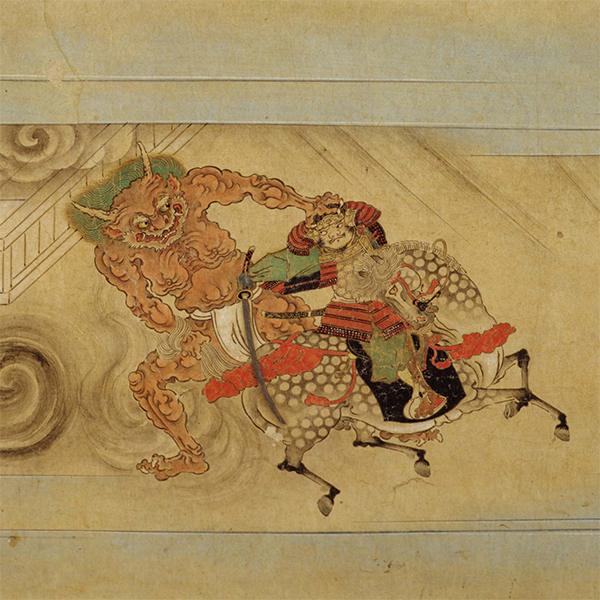The Arts of the Imperial Court | 8th–16th century
-

Illustrated Story of the Warrior Watanabe no Tsuna (detail), Muromachi period, 16th century
Japanese Gallery (Honkan) Room 3
April 4, 2023 (Tue) - May 14, 2023 (Sun)After emulating China for generations, the imperial court began to develop its own cultural identity around the 10th century. This movement was led by the court nobility serving the emperor. The body of work they produced — literature, calligraphy, painting, and elegantly decorated items for daily use — became one of Japan’s cultural foundations.
Even after the samurai gained more political power than the court in the 12th century, the court remained the home of high culture for centuries. The different art forms of the court were closely related, with literature playing a central role. Previously the nobility wrote in Chinese, but the creation of a new writing system (kana) helped Japanese literature to flourish. Both noblemen and noblewomen wrote some of Japan’s most celebrated poetry and stories, including by the court lady Murasaki Shikibu. Scenes from literature were also shown in paintings and on furnishings, which the nobility commissioned for their mansions.
| Designation | Name | Creation/ Excavation/ Provenance |
Period | Acquisition/ Ownership/ Accession Number |
CMT | ||
| Highlight | Illustrated Story of the Warrior Watanabe no Tsuna | Muromachi period, 16th century | A-942 | ||||
| Highlight | Important Cultural Property | Poem on the "Hanshu" ("History of the Han") | By Emperor Fushimi (1265–1317) | Kamakura period, 13th–14th century | Lent by Reitōin Temple, Kyoto | ||
| Highlight | Important Cultural Property | "Waka" Poems | By Emperor Fushimi (1265–1317) | Kamakura period, 14th century | B-3112 |
